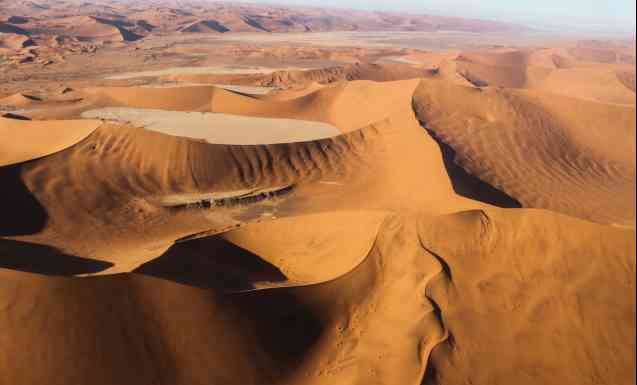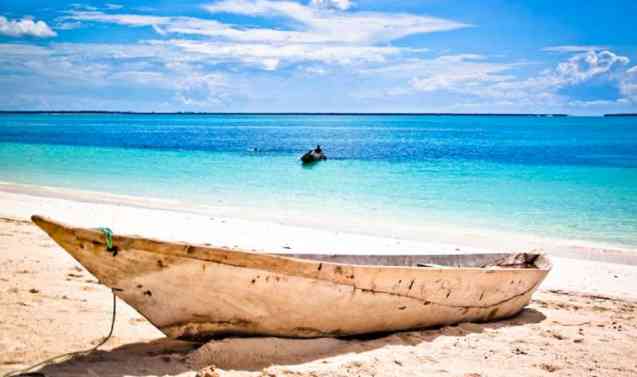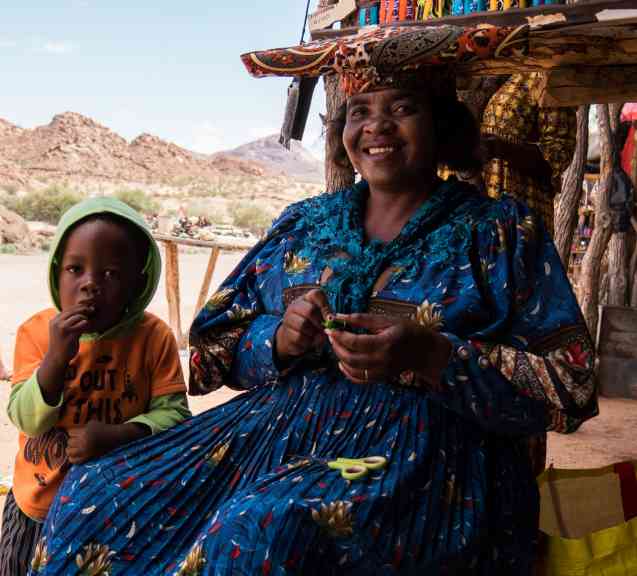As avid Africa fans, we see plenty of reasons why Africa is the best place to travel to in the world. But, to get you started, here are three excellent reasons to visit Africa rather than anywhere else.
Africa is an enthralling continent. It will never be dull or boring. Not even in the quiet moments. Quite the opposite. You’ll often experience something incredible or jaw-dropping in the quiet moments. Things that somehow make any other destination dreary in comparison.
That’s part of why we love Africa. But, we also want to celebrate the African people, their land, and their often simplistic and very courageous outlook. An attitude of ‘we will make a plan’ or ‘let’s see what we can do’ that ensures they always do make a plan despite every and any circumstance.
Africa is an ideal post-COVID destination because there are so many remote places and wilderness areas where you can get away from it all. Out of the millions of brilliant reasons to visit Africa, I have chosen to highlight just three.
3 Reasons why you should travel to Africa on your next trip, rather than anywhere else

1. The Beautiful Landscapes of Africa – scenic places to detox and rejuvenate
Computer screens. Mobile devices. Televisions. Continuous noise pollution. Air pollution. Long work hours and stress, stress, stress. We are constantly bombarded by news feeds. And every day we hear about COVID and elections, crime and cruelty. How we should be ALL things to ALL people at ALL times to prevent yet another generation of people beset with issues. What we are all wanting is a place of rest and a place where cell phones and WiFi are definitely not available.
Africa is the answer to this cry. And it has something for everyone. To start with, Africa has plenty of space. Enough space for people to get away from it all. To escape and not worry about social distancing and hand sanitizing at every turn. We have space galore accompanied by endless skies.

Even more so if you take a private trip, designed for you. In this case, you will be the ONLY person or group in already secluded areas. So, social distancing is natural and stores non-existent. You’ll be washing fine dust off your skin before eating delicious meals. Rather sanitising like crazy. Or, before snacks with glorious wines while you watch magnificent sunsets. The African sunrises – over the oceans, mountains and savannahs – are also phenomenal. They are completely different from the reds, oranges, golds and purples of the sunsets. The colours of dawn are silvers, greys and pinks. And there’s often a slight breeze that comes up before dawn to herald yet another PERFECT day in Africa.
As your trip progresses, you will find it easier to get up early and watch the dawn break. That’s because you’ll sleep deeply and get into the rhythm of early nights. Dark nights under star-studded skies and cooler temperatures also make for restful sleep. Along with the sounds of nature – the chorus of crickets and barking geckos that lull you to sleep. Your body clock will realign and your senses will awaken. Each day in the African bush brings new wonders to explore. Travelling through Africa is like opening a book of marvels. Distances are huge and the vistas incredible. We have the oldest desert in the world, the Namib, an endless sea of sand and petrified trees. It also has some of the highest sand dunes, and the colours will make interior designers swoon. It’s a photographers heaven.

There are the sociable weavers with ingenious homes that almost topple the trees dotting the Namib. Then there’s the White Lady Spiders and Golden Moles and the proud Oryx. All coming together to make the landscape so very special and one of my personal favourites. The antithesis of this desert landscape is the powerful Victoria Falls. A massive waterfall on the border between Zimbabwe and Zambia. Here 500 million litres of waterfall 108 metres over the edge, in season.

Another completely different place to the Namib is the Okavango Delta in Botswana. It is an inland wetland with lush waterways, small islands and secluded lagoons. This pristine delta attracts huge numbers of wildlife. And, the channels dotted with water lilies and the soft glide of the ‘mokoro’ bring such a feeling of peace over one.

Delta mokoro trip in Botswana
Africa has countless beautiful beaches too. Starting in the Cape of South Africa we have the incredible beaches of Camps Bay and Clifton. Then there are the untouched beaches of the Wild Coast. The golden-sand beaches of the Sunshine Coast and KwaZulu-Natal’s subtropical coast. In the Cape, you’ll get fragrant fynbos and Table Mountain as a backdrop. And in the KwaZulu-Natal, it’s verdant fields and rolling hills that stretch to the jagged peaks of the Drakensberg Mountains. In neighbouring Mozambique, you’ll find unbelievably white beaches and turquoise waters. Ocean waters teeming with green turtles, manta rays and whale sharks. And estuaries hosting sea horses where the diving is amazing. The coral reefs here are also some of the best in the World.
If you love beaches then don’t miss out on Zanzibar islands. Azure waters, white sands, traditional dhows and island spices. These all make Zanzibar one of Africa’s top holiday destinations. Then, there are the remote beaches of the rugged Skeleton Coast in Namibia. Scattered with the wrecks of many ships that that succumbed to the wild Atlantic.

Africa’s landscapes are diverse. We have deserts and floodplains, savannahs and mountains and winelands and beaches. These lands call for exploring. No matter where you find your rest, Africa offers it with welcoming, open arms.
2. Africa’s Wildlife – the Big 5, the Little 5 and everything between
Africa is where your imagination will meet reality. Wildlife documentaries, TV shows, nature magazines, school projects, zoos and museums will all come to life on safari in Africa. You’ll get to see all shapes and sizes of wild animals. From the greatest land animal, the African Elephant (of almost 7 tons), to the diminutive elephant shrew. From the icon of African skies, the Fish Eagle, to the little Cape White Eye. From the colossal Whale Shark to the fragile seahorse – Africa has them all in profusion.

Africa is a destination that brings people back time and time again. At first, you come to see the famous Big 5 (elephant, lion, leopard, buffalo and rhinoceros). And then, the Little 5 (elephant shrew, ant lion, leopard tortoise, buffalo weaver and rhino beetle). At first, it is all about the Big 5, but then you realise how much is NOT included in that very small list.
Animals you have heard about and read about and dreamt about – the giraffe and hippo, cheetah and zebra. Even the antelopes take you by surprise with their variety and numbers! There are so many kinds of them. Ranging from the delicate duiker with its tiny hooves that can fit into a teacup. To the magnificent Eland that looks as if it has stepped straight off a bushman painting on a cave wall. Just when you feel you have seen enough impalas, you chance upon the black-faced impala. And, immediately they aren’t commonplace but a precious inhabitant of the continent.

What about the primates? There is a list of course and this is where we make an appearance, if you choose to of course. Gorilla, chimpanzee, baboon, lemur, monkey and human. All found in Africa. The great African Mountain Gorilla, an endangered species, lives in Central Africa. Here wild troops with silverbacks inhabit only a few, small forest locations. Seeing these gentle apes is a rare privilege that should be on anyone’s bucket list! They are social and intelligent animals that are fascinating to watch in the wild.

Gorilla trekking in Africa’s rainforests is also easy to combine with a Big 5 safari in one of Africa’s most legendary game reserves. People often go to Masai Mara in Kenya and the Serengeti in Tanzania when they go gorilla trekking. The zebra and the wildebeest (gnu) are also a common sight in most game reserves and parks in Africa. But, until you see over 750 000 zebras stampeding with 1.2 million wildebeest; you will not believe how many of them there are. Nor how awe-inspiring the natural phenomenon of the Great Migration is. This annual wildlife spectacle happens after the rains. When the herbivores migrate in search of sweet grasses. Watching them migrate across Serengeti and Masai Mara, in a never-ending cycle of survival, is a spellbinding sight.

There are smaller migrations too that are no less impressive. Such as the Kasanka bat migration in Zambia, from the end of October to December. Here 10 million straw-coloured fruit bats migrate at dusk for about 60 days. Then there’s the zebra migration in Botswana which happens twice a year after the rains. It sees these striped animals move from the Nxai / Makgadikgadi areas to the Boteti and back again. This photogenic migration starts in the dry winter season. And continues in November when the rains come and the zebra herds retrace their steps. In Kenya, the soda lakes of Nakuru and Bogoria attract striking flamingo flocks. It’s the algae and shrimp in the shallows of these Rift Valley Lakes that gives the birds their vibrant pink plumage. In East Africa, April to June is best for birdwatching. But, you can see other wildlife all-year-round in this area, so it’s always a good time to visit.

Closer to (my) home we have the Western Leopard Toad. This little toad spends most of the year in residential gardens and ponds. But when breeding season arrives they move into the breeding areas. This is usually signalled by the males calling. A call that sounds like a very loud snore. So, when you hear snoring all around, get ready to brave the elements and rescue toads. Because they get into danger as they cross the streets and migrate in search of clean water for breeding. These leopard toads are indicator species. They show us if we are polluting our dams and rivers in the Cape, so they are important.
Next, there’s the Humpback Whale migration of Madagascar which is a sight to behold. These massive cetaceans swim from the cold Atlantic (where they feed) to the warm waters (where they breed and give birth). What a privilege to view these giants of the deep.

Once you have visited Africa and seen the sheer number of land and marine animals, turn your gaze to our skies. The diverse habitats of Africa are home to an incredible array of bird species. We even have Big 5 bird lists for many regions. Such as the Big 5 Birds of Kruger – Martial Eagle, Lappet-faced Vulture, Saddle Billed Stork, Fish Eagle and Kori Bustard. If one looks at the list for Botswana it also includes the stunning Pels Fishing Owl. There’s also the list of the Top 10 Most Iconic Birds. They are the Martial Eagle, Cape Parrot and Cape Vulture, Secretarybird and Red Bishop. As well as the Blue Crane, Cape Sugar Bird, Verreaux’s Eagle, Knysna Loerie and Pin-tailed Whydah.
All these bird lists and we haven’t even mentioned the birds you see daily in gardens, urban parks and small reserves. Like the Burchell’s Coucal, known as the rainbird. And the African Hoopoe with its distinctive black, white and rust colouring. The lilac-breasted roller, an integral part of the African bushveld. This pretty bird often flies alongside safari vehicles to catch the crickets and other insects disturbed by the wheels. You’re also likely to see guinea fowl and francolin. You can find these everywhere – from the bushveld to urban parks and large gardens. There are so many birds in Southern Africa! Most homes have a bird book, a pair of binoculars and a list of birds in progress.

We have list after list after list of creatures to see, so you will never get bored. Come and search out the Big 5, Little 5, Big 5 Birds, Ugly 5, Shy 5, Marine 5 and Impossible 5. The lists are endless.
3. The People of Africa – the traditional African tribes and the multitude of colourful cultures we take pride in
Africa is home to an estimated 3000 tribes. And, each of them has different languages, cultures and traditions. Some of the tribes are well-known. Such as the Zulu, the largest of the ethnic groups in Africa of almost 11 million people. This proud tribe lives in South Africa where most people know about their great military genius, Chaka Zulu. Even today, the Zulu stand tall and proud, many of them having a distinct royal air about them.

The Maasai people of Kenya are even more well-known. These proud nomadic people prize their cattle and will fiercely defend their flocks and way of life. The bright red colours of their robes are a unique symbol of Africa and its tribes. I remember seeing the Maasai for the first time. It was as we sped by in a safari vehicle on the way to the Masai Mara reserve. There was a group of about seven Maasai, standing under a great boughed tree which stretched out over the exposed plain. The red of their robes created a patch of colour in the arid landscape. They looked grounded, as if they belonged to the earth and always would. A fleeting sight that will remain branded in my memory.

The San and the Batswana of the Kalahari have a culture that is centuries old. These gentle people with their distinctive faces and wiry bodies are phenomenal trackers. They are so in tune with the earth and all its living creatures. Thanks to huge interest in the past, people have made an effort to record their stories (the oral tales passed down through the generations). They’re enchanting stories about; Why the moon waxes and wanes, Why the leopard has spots and Why the hyena laughs in the face of danger. These are incredible myths and legends that often have a lesson for the youth. We need to keep recording these stories and keep them alive.
Alongside the San Bushman, there are also the Herero and Nama, Damara and Himba of Namibia. Of these, the Himba is the only tribe that still lives a traditional lifestyle in Southern Africa. Their beautiful jewellery, red ochre hairstyles and body ornamentation mark significant life events. Such as weddings and births, but also deaths. The Herero women wear colourful dresses and horn-shaped hats as proud reminders of the German-Herero war. A war that almost completely wiped the Herero tribe out. The dresses are a subversion of the ‘rulers’ fashion at the time. And the horned-hat a symbol of their tradition as herders.

We have already met the pastoral Maasai and now we meet the hunter-gatherers, the Hadza. This indigenous tribe of Tanzania has an encyclopaedic knowledge of edible plants and grasses. And unrivalled skill in making homemade bows and arrows.
In neighbouring Kenya, where the Maasai live, you’ll also find the Samburu and the Swahili. Here they have implemented innovative land management systems that give tribes traditional use of the land while conserving wildlife. These community conservation arrangements have grabbed the attention of many around the world. They’ve also allowed the tribes to share their traditions and beliefs, as well as their striking artworks. Many villages now have local enterprises. Small businesses that enable the tribes to stay true to their local cultures and improve their quality of life at the same time.
Moving on to the Horn of Africa, travelling to Ethiopia is like stepping back in time. It is one of my favourite destinations. In this ancient land, there are still very authentic tribal areas in the Omo Valley region. With eight traditional tribes (the Karo, Kwegu, Hamer, Kwegu, Bodi, Daasanach, Nyangatom and Suri) still living at the lower end of the Omo River. This is an area where the African tribes of your imagination come to life in full colour. Here tribal people still cut and fill their lips and earlobes with large discs and plugs. You’ll see plaited hair covered in mud and animal fats. Encounter people who dress and behave as they have since their societies formed.
Even in the cities and towns, the phenomenal old architecture, churches, paintings and frescoes will captivate you. As well as the old practices, such as the feeding of the hyenas outside the city walls in Harar. The ancient and mysterious sights will make one want to pinch yourself to make sure you are awake. It feels as if you have stepped back in time or stumbled onto a movie set. One thing is for sure – wherever you go in Ethiopia, there will be extraordinary, big, white smiles to greet you.
That’s why you should travel to Africa
There are thousands of other places to see and many, many more animals to list and tribes to meet. Africa is a continent of never-ending surprises and adventures! No matter who you are or where you come from, you cannot but be captivated by AFRICA! It is the MOST incredible continent.
“One cannot resist the lure of Africa.” – Rudyard Kipling
Your time in Africa will always be better if you let your heartbeat follow the rhythms of sunrise, sunset and starry skies. And if you keep your heart and eyes open. I promise you will leave changed and you will long to return. Very few can visit Africa and not yearn to come back.
Get in touch for help planning your trip to Africa. We’re happy to share our expert advice about travelling to our remarkable continent.
